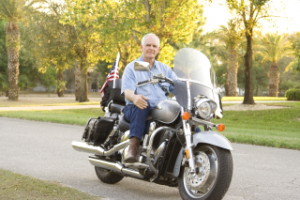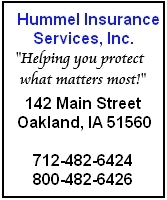Getting back in the saddle safely: Tips from the IA DOT & MSF
May 11th, 2018 by Ric Hanson
Lots of folks ride motorcycles when they are in their 20s and 30s. Then life happens and schedules, budgets, and lifestyles change to the point that many trade life on two wheels for a vehicle better suited for shuffling family around. As time passes and the kids grow up and incomes stabilize, many of those former 20- and 30-something motorcycle riders who are now 60-something, renew an interest in bikes. National statistics from the Insurance Institute for Highway Safety show that in the early 1980s the proportion of people killed in motorcycle crashes who were 50 and older started to increase, rising from 3 percent of all rider deaths in 1982 to 13 percent in 1997 and 36 percent in 2016. In 2016, 91 percent of motorcyclists killed were male. 
What to do if you’re thinking about riding later in life.
The key to riding safely in the latter stages of life relies on your understanding that things have changed, both in our own physical abilities and in the equipment. Be realistic about your own body. It’s natural that as we age, reaction times are slower and our equilibrium may not be as stable as it used to be, making balancing on a bike more challenging. Changes in strength and flexibility may influence your ability to handle a 500-pound machine. “The first thing I would advise someone to do who wants to renew riding after some time off is to take a rider safety course,” said Kala Shipley, the Iowa Department of Transportation’s motorcycle safety program coordinator. “These courses are designed to help you assess your skills, learn new things, and help you test your riding limits in a more controlled environment.”
There’s always something new to learn. The Motorcycle Safety Foundation offers two levels of courses, the Basic Rider Course and the Advanced Rider Course. In the basic rider course, you’ll receive both classroom and controlled riding experiences. This course level is a great refresher, even if you rode quite a lot in your younger years. Laws have changed and so has the equipment available to motorcyclists. The advanced rider course is just a half-day and will help you hone your riding skills and assess your mental readiness to ride in traffic.
For more information on rider courses – https://iowadot.gov/mvd/motorcycle/motorcycle-rider-education





